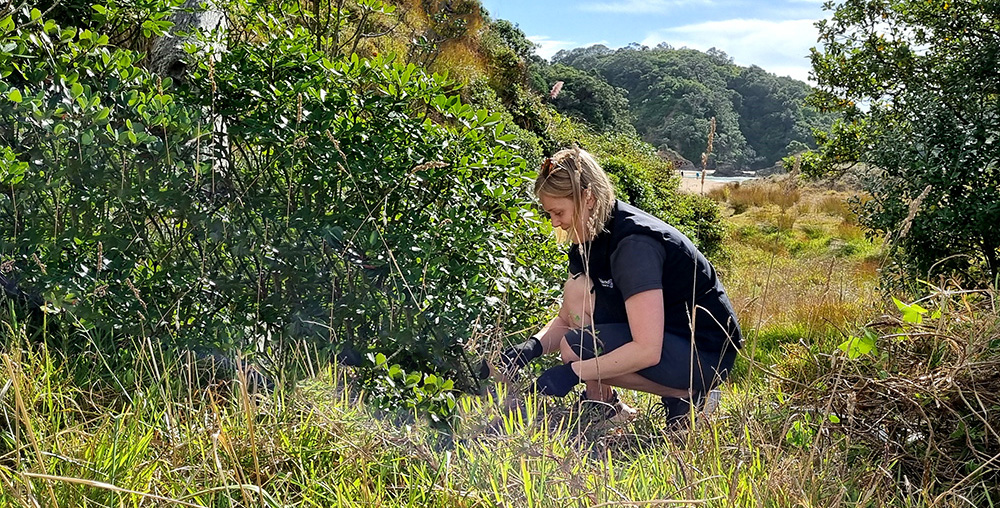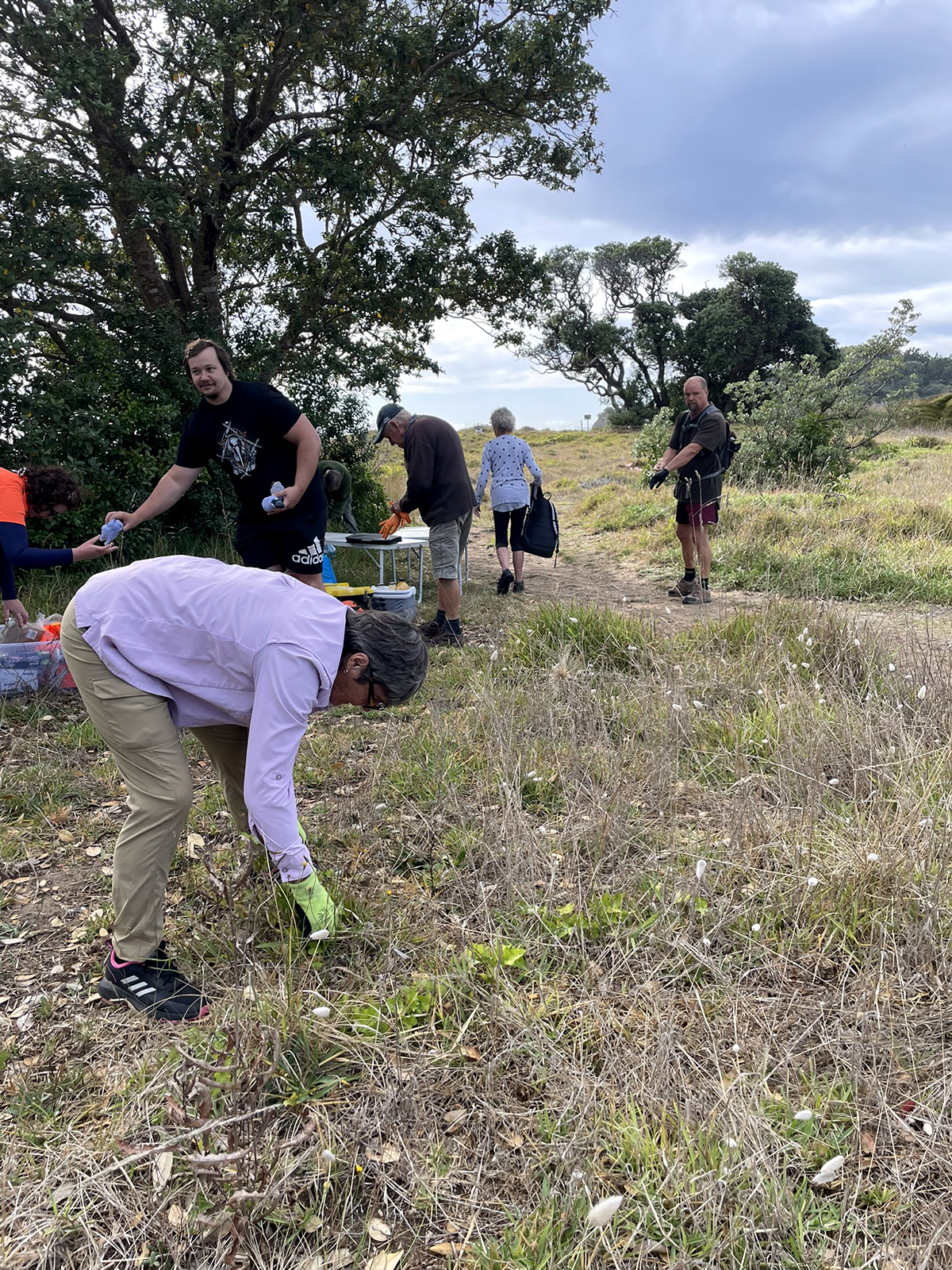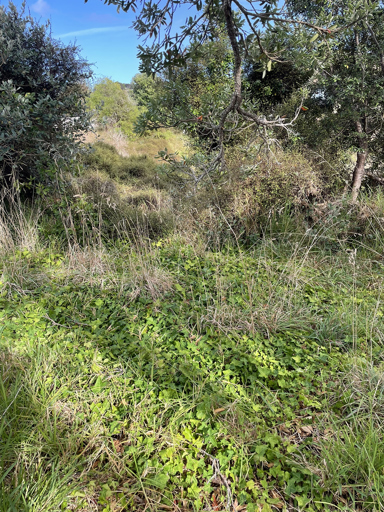Story
Weed control for Healthy Dunes
Weed control is essential to maintain a healthy dune. Regular weed control allows native dune plants, like spinifex and pīngao, to build the dunes and provide indigenous biodiversity with the habitat it needs to thrive.

Brooke Gray, Biodiversity Advisor - CoastCare, weeding ivy from the dune area at Matapōuri.
Spinifex and pīngao are sand-binders and the most important plants in the foredunes. They do not stop wave erosion but speed dune recovery after it, by trapping wind-blown sand and building the dunes. This makes them a vital element in the wave erosion cycle. They greatly reduce the effects of wind erosion and loss of sand inland. The mid dune and back dune zones provide an essential buffer, and both these zones are home to native plant species specialised to their environment.
Unfortunately, many introduced plants are now present in New Zealand’s ecosystems, including our coastal dunelands. Without weed control, pest plants like agapanthus, wattle (acacia), exotic ice plant and grasses like kikuyu and buffalo grass, to name but a few, take over from native dune plants.
These pests are well-adapted to coastal environments and outcompete native plants, over-stabilising the dune and creating an environment in which it is hard for our native dune plants to survive and thrive. This leads to a loss of dune health and biodiversity. They are not effective at building dunes and do not have the salt-tolerance of our native sand-binders, so they reduce the dunes’ ability to recover from erosion.

Volunteers at the Matapōuri working bee.
CoastCare groups in Te Taitokerau are working hard to keep weeds off their patch. Two working bees held in March, at Matapōuri and Ocean Beach, demonstrated the determination of volunteers to stop the spread of weeds and maintain healthy dunes.
The Matapōuri working bee on 19 March was organised by DOC as part of their Volunteer Wednesday programme. A team of volunteers spent the morning manually weeding the dunes and removing pest plants, including large patches of ivy. Ivy is a scrambling climber that smothers other plants and crowds out native species.
Meanwhile, at Ocean Beach on 20 March, the Ocean Beach Restoration Association (OBRA) brought a group of volunteers together to rid the dunes of weeds and to install new CoastCare signs asking people to protect native dune plants and stay off the dunes.
If you’d like to join, or start, a CoastCare group in your area and help protect the dunes and beaches of Te Taitokerau, contact coastcare@nrc.govt.nz
Many pest plants found on the dunes are garden escapees – you can help by:
- Composting garden waste instead of dumping it onto the dunes.
- Keep lawn clippings and other plant cuttings off the dunes.
- Removing invasive introduced plants from your property and replacing them with natives.
- Keep native dune plants healthy by keeping to tracks.
For more info on how sand dunes work see:
For more info on pest plants visit:




